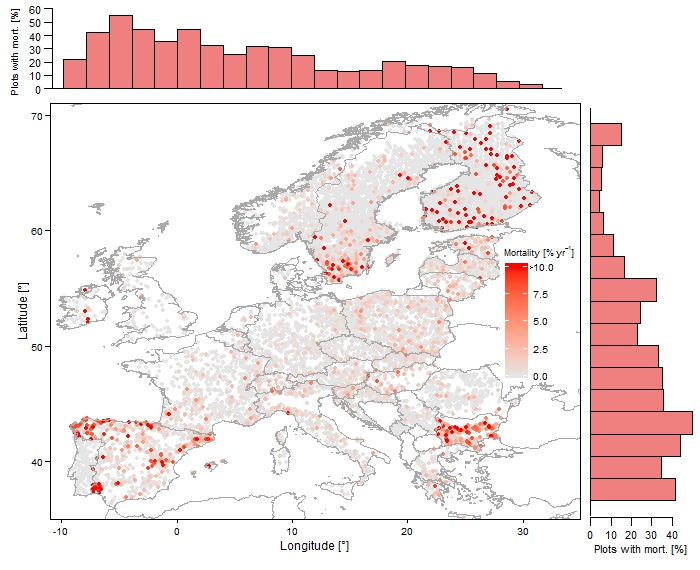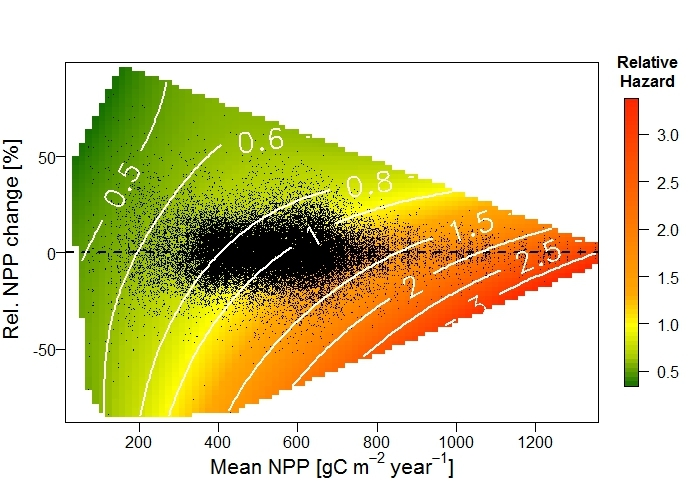What >230,000 trees can tell us about recent forest mortality in Europe
In a recent analysis we've analyzed close to 1 Mill. records from the only consistent continent-wide inventory of forests in Europe to understand patterns and drivers of recent tree mortality in Europe. The results were now published in Global Change Biology.
In Europe, every country has its own forest inventory, with widely varying designs and parameters recorded. This limits the ability to address continental-scale patterns and trends with empirical inventory data. There is, however, one consistent inventory scheme for Europe's forests: ICP Forests. This inventory was initiated in the 1980s as a result of observations of large-scale forest dieback in Europe, and offers great potential to learn about Europe's forests (see e.g. here).
We here analyzed close to 1 Mill. observations of >230,000 trees (whereof ~5,500 died between 2000 and 2012) to understand patterns and drivers of recent tree mortality in Europe. We found mortality hotspots on the Iberian Peninsula, in south-eastern Europe, and parts of northern Europe.

Warm summers as well as high seasonal variability in precipitation increased the likelihood of tree death. However, our data also suggest that reduced cold-induced mortality could compensate increased mortality related to peak temperatures in a warming climate. Our sensitivity tests show that an increase in the summer maximum temperature by +2°C in the preceding year increases mortality of individual trees by +17.8% in the following year. Conversely, the same increase in winter minimum temperature reduces mortality by –22.9%. Consequently, if both maximum and minimum summer temperature would increase consistently by +2°C, mortality would be reduced. Besides climate variability, age was an important driver of tree mortality, with individual mortality probability decreasing with age over the first century of a trees life.
A considerable portion of the observed variation in tree mortality could be explained by satellite-derived net primary productivity, suggesting that widely available remote sensing products can be used as an early warning indicator of widespread tree mortality. A doubling in mean NPP (indicating site productivity and positively related to mortality, as competition between individual trees increases with productivity) from 350 g C per m² and year to 700 g C per m² and year increases mortality by 62.8%. Furthermore, for a mean productivity level of 500 g C per m² and year, a drop in NPP (indicating recent trends in resource availability and use, and negatively related to mortality) by 50% in the previous two years increases mortality by 51.9%.
Our findings advance the understanding of patterns of large-scale tree mortality by demonstrating the influence of seasonal and diurnal climate variation, and highlight the potential of state-of-the-art remote sensing to anticipate an increased likelihood of tree mortality in space and time. For more details click here.